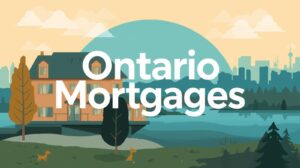To begin, let’s gain an understanding of the various categories of mortgages: In the world of mortgage lending, we commonly distinguish between three major tiers: A-lender mortgages (also known as ‘A’ bank mortgages), B-lender mortgages, and private lender mortgages. You may recognize these terms as they have become widely used, not just among industry experts only. The mortgage industry has evolved significantly over the years, moving beyond traditional bank-only lending options to include alternative mortgage solutions for all types of borrowers (good credit or bad credit). These alternative financing options cater to borrowers who require more flexibility in meeting their mortgage needs, whether it’s for purchasing a property, refinancing, or accessing equity in their home.
In simpler terms:
An A-lender mortgage (also known as a bank mortgage) is a mortgage funded by major banks or tier-A broker channel banks. They offer the best mortgage rates, and longer-term options, but have stricter approval guidelines that typically result in a slightly lower affordability.
A B-lender mortgage, on the other hand, is a mortgage funded by non-traditional banks such as Trust companies, B-Lenders, Monoline Lenders & Credit Unions. They offer a common-sense lending approach, higher affordability, and flexibility in the types of income used to qualify. Although their rates are reasonably priced considering the flexibility offered, they are generally higher than major tier A-banks.
A private lender mortgage is a type of mortgage that is not funded by lending institutions such as banks or B-lenders. Instead, it is funded by private sources such as Private Equity, Mortgage Investment Corporations (MIC’s), numbered companies/registered corporations, or individual lenders (people like you and I). Private lenders are primarily interested in the available equity in a home that can be used to secure their mortgage, rather than the borrower’s qualification such as required by banks. Although their rates are considerably higher, private lender mortgages offer the highest level of flexibility with minimal “red tape”. In situations where quick funding is necessary, private mortgage solutions are often the most straightforward option with a very quick turnaround.
Pros and Cons of a ‘B-lender mortgage’:
The benefits of a B-Lender Mortgage can vary from one borrower to another. To keep things simple, we’ll limit the pros and cons of a B-lender mortgage to 3 major points for each.
Pros:
- B-Lender Mortgages provide options for individuals who are not eligible for traditional bank mortgages due to various reasons such as income type, high debt-to-income ratios, poor credit or thin credit, and non-conventional down payment sources.
- B-Lender Mortgages come with shorter terms of 1 to 3 years, which offer borrowers the flexibility to improve their financial situations and switch back to traditional banks without incurring significant penalties associated with longer mortgage terms.
- B-Lender Mortgages have less strict qualification guidelines and are more lenient on debt-to-income ratios, credit scores, and non-standard sources of income (such as self-employment, commission, part-time, or contract employment), making it easier to qualify for a mortgage and usually yielding higher mortgage affordability.
Cons:
- A B-lender mortgage typically comes with a higher cost in two ways: interest rate and mortgage closing costs. However, since these mortgages are often used as short-term or mid-term solutions to meet immediate mortgage financing needs, the trade-off is often worth it for most borrowers.
- Another potential drawback is that a property appraisal is required for all B-lender mortgages, regardless of whether it’s for a purchase or a refinance. In contrast, A-lender mortgages don’t always require an appraisal (50-60% of the time). While this may not be considered a significant con, it is an added cost of closing. It’s worth noting, though, that the cost of an appraisal is often outweighed by other costs associated with closing on a home. Moreover, given the recent increase in home prices and real estate market turbulence in 2023, A-lender mortgages are now requiring appraisals more so than in previous years, making this less of a con than it once was.
- One more potential disadvantage of a B-lender mortgage is that it requires a minimum down payment of 20%. This may not pose a problem for refinances, but for purchases, it can be a significant hurdle for buyers who budgeted for a minimum down payment requirement of 5%, 10%, or even 15%. Since home prices in major cities across the province have approached uninsurable territory over the last two years, a 20% down payment might be necessary across all tiers, making this point less of a con than in previous years.
(Note: It is anticipated that home prices will continue to decline during the first half of 2023, resulting in a return to insurable home price territory (which is under $1,000,000). Some areas have already experienced a decline of up to 20% since the implementation of the most recent quantitative tightening. At the time of writing (March 2023), some economists predict that the price correction has already been priced in, while others predict a further decline of up to 5%-10% nationally in 2023.)
Unlike A-lenders who advertise their insured mortgage rates, B-lenders do not typically publish their mortgage rates to the public. The reason for this is that B-lender mortgages take a customized approach to each application, considering unique circumstances to provide the most reasonable mortgage offer. Therefore, there is no one-size-fits-all rate with B-lenders. However, you need not worry about getting the best B-lender mortgage rates because we are motivated to secure the best mortgage rates for you with the most reputable B-lenders in the industry. We have extensive experience working with these lenders and can guide you through your options. Call us at (905) 455-5005 to discuss your options.


